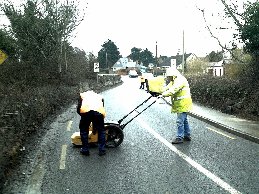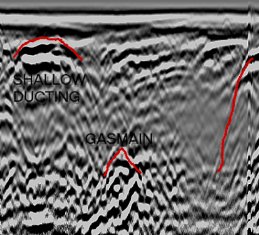Collinstown Business Park,
Old Airport Rd, Cloghran,
Co. Dublin.
Tel: (086) 812 1988/820 9828
Fax: (01) 842 8401
E-mail: donal@lenmargroup.com
GPR (Ground Penetrating Radar)
Radio-detection techniques are unable to detect non-metallic buried services including plastic or polyethylene water and gas pipes and concrete or clay drainage pipes. GPR is able to detect non-metallic as well as metallic pipes. The GPR system uses an antenna to send and receive electromagnetic waves. It sends signals beneath the ground surface to locate buried utilities and determine utility depth.

The GPR system is also used to detect buried objects, map soil layers, and determine the top of the water table or bedrock surface It will also give an indication of location and depth of buried services but will not identify them. GPR works by collecting reflected radar signals on a continuous basis to build up a 2 dimensional data image. Collected radar information can be then processed with compatible software to establish a 3-dimensional presentation of the data. The limitations to this system occur in waterlogged areas where ground penetration is not possible. Also over rough or undulating ground or where there exists surface obstructions, the radar antenna cannot make good contact with the ground and so cannot produce dependable data.

GPR systems are used by Lenmar to carry out utility surveys. These systems antennae range from 200MHz to 400MHz which are recognised as being the most versatile in the detection of utilities. In the example shown responses for ducting and a depth of 450mm and a gasmain at 1200mm can be clearly identified.
